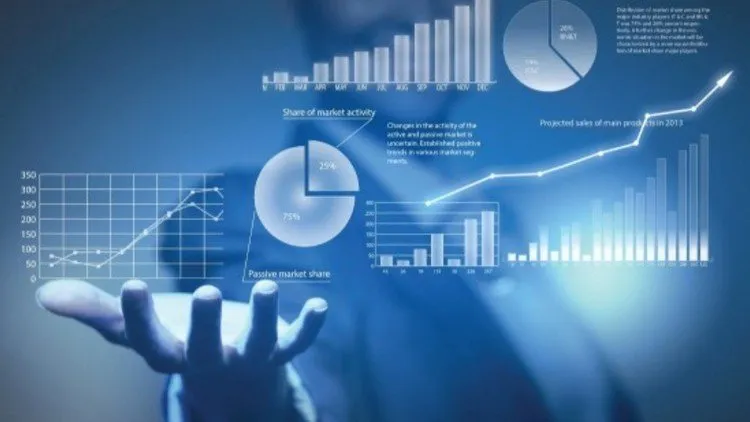Statistics for Data Analytics
Statistical Analysis using Regression, Correlation ,Probability, Mean, Median & Mode & Dispersion and Index Numbers

Statistics for Data Analytics udemy course
Statistical Analysis using Regression, Correlation ,Probability, Mean, Median & Mode & Dispersion and Index Numbers
What you'll learn:
- The students will gain insights on various Statistical Techniques used in Data Analytics
Requirements:
- No
Description:
Statistics is the specific branch of science from where the Data Analysts bring distinct conclusion/interference under the same data. Moving discussion a step further, we shall discuss Important Statistical Techniques like:
Probability
Probability Distributions-Binomial, Poisson & Normal Distribution
Regression Analysis
Correlation Analysis
Index Numbers
Measures of Central Tendency & Dispersion
Statistical Data Analysis
Being a branch of science, Statistics incorporates data acquisition, data interpretation, and data validation, and statistical data analysis is the approach of conducting various statistical operations, i.e. thorough quantitative research that attempts to quantify data and employs some sorts of statistical analysis. Here, quantitative data typically includes descriptive data like survey data and observational data. In the context of business applications, it is a very crucial technique for business intelligence organizations that need to operate with large data volumes. The basic goal of statistical data analysis is to identify trends, for example, in the retailing business, this method can be approached to uncover patterns in unstructured and semi-structured consumer data that can be used for making more powerful decisions for enhancing customer experience and progressing sales. Apart from that, statistical data analysis has various applications in the field of statistical analysis of market research, business intelligence(BI), data analytics in big data, machine learning and deep learning, and financial and economical analysis.
Basics Steps for Statistical Data Analysis:In order to analyze any problem with the use of statistical data analysis comprises four basic steps:
1. Defining the problem
The precise and actuarial definition of the problem is imperative for achieving accurate data concerning it. It becomes extremely difficult to collect data without knowing the exact definition/address of the problem.
2. Accumulating the data
After addressing the specific problem, designing multiple ways in order to accumulate data is an important task under statistical data analysis. Data can be collected from the actual sources or can be obtained by observation and experimental research studies, conducted to get new data.
In an experimental study, the important variable is identified according to the defined problem, then one or more elements in the study are controlled for getting data regarding how these elements affect other variables.
In an observational study, no trial is executed for controlling or impacting the important variable. For example, a conducted surrey is the examples or a common type of observational study.
3. Analyzing the data:Under statistical data analysis, the analyzing methods are divided into two categories;
Exploratory methods, this method is deployed for determining what the data is revealing by using simple arithmetic and easy-drawing graphs/description in order to summarize data.
Confirmatory methods, this method adopts concept and ideas from probability theory for trying to answer particular problems.
Probability is extremely imperative in decision-making as it gives a procedure for estimating, representing, and explaining the possibilities associated with forthcoming events.
4. Reporting the outcomes:By inferences, an estimate or test that claims to be the characteristics of a population can be derived from a sample, these results could be reported in the form of a table, a graph or a set of percentages. Since only a small portion of data has been investigated, therefore the reported result can depict some uncertainties by implementing probability statements and intervals of values. With the help of statistical data analysis, experts could forecast and anticipate future aspects from data. By understanding the information available and utilizing it effectively may lead to adequate decision-making. (Source)
The statistical data analysis furnishes sense to the meaningless numbers and thereby giving life to lifeless data. Therefore, it is imperative for a researcher to have adequate knowledge about statistics and statistical methods to perform any research study. This will assist in conducting an appropriate and well-designed study preeminently to accurate and reliable results. Also, results and inferences are explicit only and only if proper statistical tests are practised.
Who this course is for:
- Graduation Students, Management Students, MBA, BBA, MCA,BCA,Commerce students, Data Analytics students, Professionals
- Blender for character creation
- Blender 2.8 Character Creation
- How to Become a Software Developer From Scratch
- Blog Post Writing Made Simple - Blogging Methods That Work
Course Details:
- 6,5 ч видео по запросу
- Полный пожизненный доступ
- Доступ через мобильные устройства и телевизор
- Сертификат об окончании
Statistics for Data Analytics udemy free download
Statistical Analysis using Regression, Correlation ,Probability, Mean, Median & Mode & Dispersion and Index Numbers
Demo Link: https://www.udemy.com/course/statistics-for-data-analytics/
